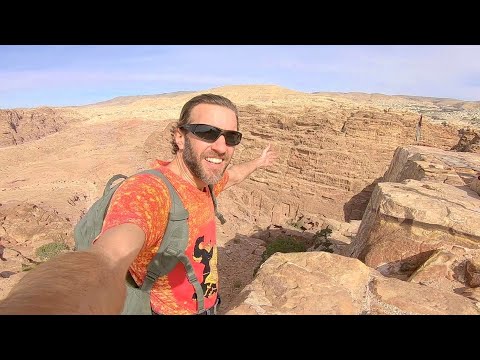
Nestled in the heart of Jordan’s desert landscape lies Petra, an ancient city that is as steeped in mystery as it is in red-hued sandstone. Known for its architectural grandeur and complex water conduit system, Petra has fascinated travelers and archaeologists alike since its rediscovery in 1812 by Swiss explorer Johann Ludwig Burckhardt. For those planning a visit to this UNESCO World Heritage site, understanding its history, significance, and the logistics of touring the ruins is essential for a fulfilling trip.
#### Historical Overview
Petra was established as the capital city of the Nabataeans around the 4th century BC and thrived due to its location along key trade routes connecting Arabia, Egypt, and Phoenicia. Its importance grew from not just a political capital but also a cultural hub where various architectural styles converged. The city’s engineers and artists harnessed and excelled with the ability to carve structures out of rock faces, creating temples, tombs, and an amphitheater that could seat thousands.
#### Best Time to Visit
The best time to visit Petra is during spring (March to May) or autumn (September to November) when the temperatures are moderate. Summer months can be scorchingly hot, often reaching up to 40 degrees Celsius (104 degrees Fahrenheit), while winters are cold and prone to rainfall which can make some parts of Petra inaccessible due to flooding.
#### Getting There
Petra is located near the town of Wadi Musa in southern Jordan. The nearest major city is Aqaba, about two hours away by car. Amman, Jordan’s capital, offers several transportation options including buses, private tours or car rentals for the approximately three-hour drive to Petra.
#### Entrance Fees and Hours
As of 2023, entrance fees for foreigners stand at 50 JD (about 70 USD) for one day. Multiple-day passes are also available at an increased rate which can be a wise investment for those wanting a more thorough exploration of the vast site. The park typically opens around 6:00 AM and closes at sunset.
#### Touring Petra
##### The Siq
Your journey into Petra starts at the Siq—a narrow gorge that stretches over 1 km leading directly into the heart of Petra. Walking through this natural crack in the sandstone mountains sets a dramatic tone with cliffs towering up to 80 meters on each side.
##### The Treasury (Al-Khazneh)
Emerging from the Siq, visitors get their first breathtaking view of Al-Khazneh—The Treasury. This elaborately carved temple is believed to have been constructed in the 1st century BC as a tomb for Nabataean King Aretas IV.
##### The Monastery (Ad Deir)
A visit to Ad Deir requires climbing about 800 rock-cut steps but rewards travelers with views not only of an impressive façade but expansive vistas over Wadi Arava.
##### Royal Tombs
These visually striking tombs carved into western cliffs were designated for Nabataean royalty with their grandeur indicative of their inhabitants’ high status.
##### Street of Facades & Great Temple Complex
Further along are numerous other facades leading towards a Roman-style amphitheater capable of seating around 3,000 spectators adjacent to what remains of major temples like Qasr al-Bint.
#### Tips for Visitors
– **Stay hydrated**: Carry plenty of water as you explore since options inside may be limited.
– **Wear comfortable footwear**: Expect lots of walking on uneven terrain.
– **Hire a guide**: To fully appreciate Petra’s history and hidden nooks.
– **Plan your route**: It’s easy to get overwhelmed by all there is so planning what you want to see ahead helps maximize your time.
Petra not only offers a window into an ancient civilization’s artistry but also challenges our modern perceptions with its monumental achievements against harsh natural environments. Visiting this timeless wonder provides an unforgettable journey back through time amid landscapes that both daunt and dazzle.
